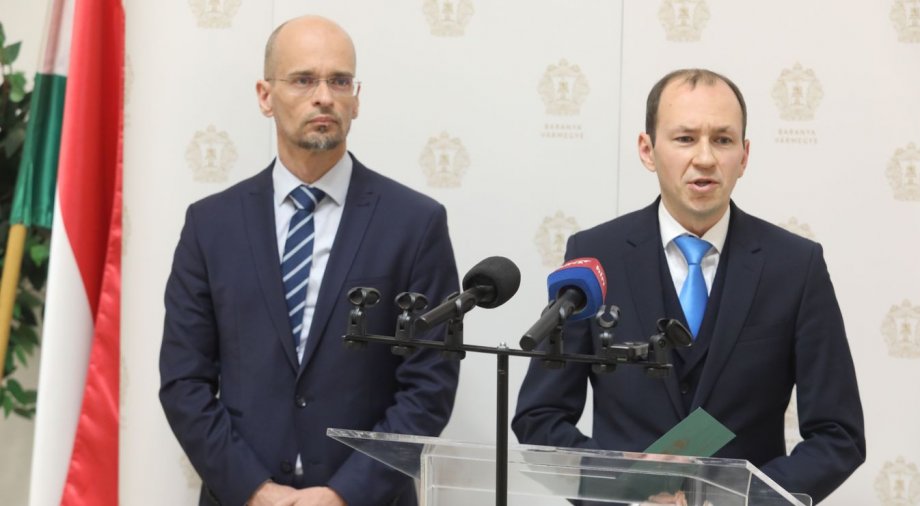Gábor Mayer, state secretary responsible for regional development, presented the South Transdanubian Regional Development Model Program in Pécs

Along with others, Gábor Mayer consulted at the University of Pécs and met with regional mayors, and before all this, a press conference was held at the county hall on Baranya's development directions.
At the event, the state secretary emphasized that the primary task of regional development is to reduce the differences between underdeveloped and developed regions. As he pointed out, the ministry has a role in coordinating the developments of sectoral policies in certain areas, including health, infrastructure, and economic development transport developments.
He mentioned TOP Plusz as one of the most important tools for territorial development, which between 2021 and 2027 will help the development of domestic regions with around HUF 2,000 billion.
Furthermore, the state secretary continued, special programs are also being launched in order to catch up with some areas in need of development. For this purpose, the Southern Transdanubian Regional Development Model Program was developed for the counties of Somogy, Tolna and Baranya, which still lag significantly behind the national average, he pointed out. Gábor Mayer indicated: the model program was negotiated and accepted by the government in December 2023.
László Őri, the president of the Baranya County Municipality, spoke about how he and his guest reviewed the most important elements of the model program affecting Baranya. According to his words, it is not an exaggeration to say that the region and Baranya were among the losers of the regime change, the region could not really find itself and could not occupy the worthy place that it should have due to the work of the local people. As he recalled, under the leadership of former government commissioner Éva Mikes, the development of the model program, the aim of which was to reduce regional inequalities, began.
He explained: based on the trends of the past period, the region managed to move away from the deadlock between 2010 and 2022, thanks to the government's job-creating investments and economic development policy, unemployment in the region decreased from 13 to 4 percent. The volume of industrial production has increased from 280 billion to 960 billion in the last decade - emphasized László Őri, who believes that the "closure" of the region for several decades must be eliminated for a real turnaround.
He said that the main reason for the delay was the closedness of the area, "the highway reached here last". We now have good hope that Baranya and Pécs will be among the winners of regional development and economic policy in the coming decades. Infrastructural developments, also treated as a priority goal by the model program, are already underway, he pointed out. Among the others, the politician from the governing party listed the new section of the M6 highway to the national border, the new public port in Mohács under construction, the development of the Pécs-Pogány airport, and the preparation of the expressway connecting Pécs and Kaposvár. After many years, 2023 was the year of the turnaround in Baranya, the region caught up from the last, penultimate place in terms of industrial production per capita to at least the lower level of the middle field, he pointed out.
The region along the Dráva, which also crosses the country's borders, will be designated as the priority cross-border cooperation area of Southern Transdanubia, as part of which the program area affected by the HUHR CBC (Interreg VI-A Hungary-Croatia 2021-27) Program (in Hungary, Baranya, Somogy and Zala counties, and on the Croatian side the territory of Belovár-Bilogora, Verőce-Drávamente, Pozsega-Slavónia Eszék-Baranya, Vukovar-Szerém, Muraköz, Varasd and Kapronca-Kőrös counties). With Croatia's accession to the Schengen agreement, the Dráva basin has gained a unique, large-scale opportunity in relation to the Baranya triangle and the catchment area of Slavonia and Osijek. This is one of the strongest untapped potential connection directions to the Western Balkans. In order to develop and catch up with the border areas, it is necessary to implement a complex, coordinated regional development program, in the implementation of which the Pannon EGTC, as the organization covering the entire border section, acting specifically for this purpose, is highly dependent on the program.

